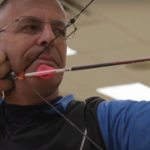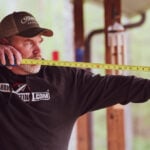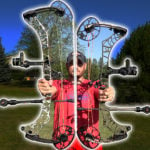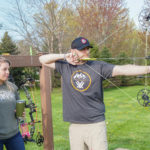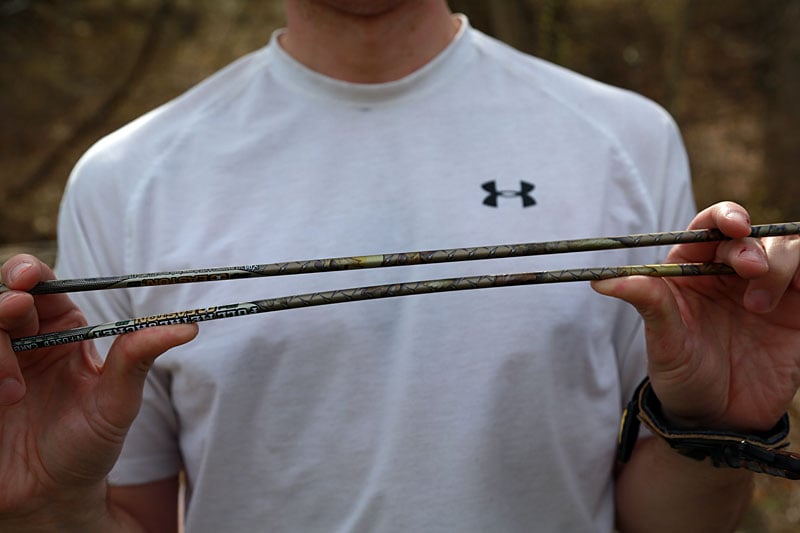
The spine, or “stiffness”, of an arrow is a simple concept to understand, yet its importance is often overlooked.
Arrow spine is rated by “deflection”, which is a measurement of the shaft’s propensity to bend when force is applied. To understand deflection, let’s first begin by understanding how spine is tested.
Spine ratings are determined by taking an arrow shaft at a length of 28”, supporting it at both ends, and hanging a 1.94lb. weight at the center.
The amount of flex that is induced on the arrow shaft by the force of the weight is then measured and gives us our “static” spine rating. For example, if an arrow bends one-half of an inch at the center, then the shaft has a static spine deflection of .500”.
Because this numerical deflection is a representation of a physical measurement – that is the arrow’s resistance towards a static force – a stiffer shaft will have a lower deflection number (less bend), and a weaker shaft will have a higher deflection number (more bend).
The most common deflections for hunting arrows are from 500 on the “weaker” end, to 300 on the stiffer end, with increments in between. (It is worth noting that some manufacturers use their own numerical systems, so be sure to check and see how the manufacturer’s classifications compare to the actual shaft deflection rating.)
Why Spine Matters
Throughout the shot cycle, an immense amount of energy in placed into the bow at full draw. This energy is then transferred into the arrow upon release.
This rapid transfer of dynamic force causes the arrow to flex and oscillate. Such flex is necessary and actually helps the arrow clear the bow without interference. However, if too much flex occurs in the shaft, then the arrow will have a hard time recovering and flying straight.
Conversely, if the arrow doesn’t flex enough, then it could fail to properly clear the bow and won’t be as forgiving as it flies down range.
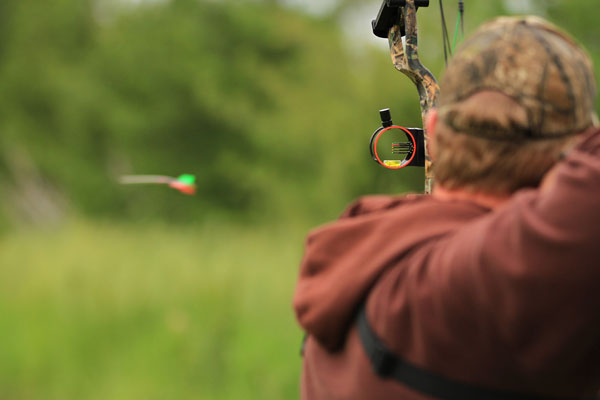
The most accurate arrow will be the one with the proper balance of flex and forgiveness as it leaves the bow, and necessary stiffness to recover and stabilize as it begins to head downrange.
Variables of Dynamic Spine
How an arrow shaft responds to this rapid transfer of dynamic force is referred to as the shaft’s “dynamic” spine. Unlike the simple formula for measuring static spine, which we discussed above, there is a myriad of factors that affect the dynamic spine of an arrow shaft.
Static spine is an important first step in selecting an arrow shaft, but selecting the proper arrow involves looking at a variety of factors to make sure that the arrow is properly spined for the dynamic force of the exact bow that it will be used with.
The most critical variables to consider are: draw weight, draw length, shaft length, bow design, and point weight. Let’s take a brief look at each of these variables.
Draw weight and draw length – When we realize that dynamic spine is the response of the arrow shaft to dynamic force, it is easy to see why draw length and draw weight are critical factors to consider when selected a properly spined arrow.
Put simply, the greater the draw weight and the longer the draw length, the more energy is built up in the bow at full draw, and transferred into the arrow shaft upon release.
The greater the amount of energy transferred into the arrow, the stronger the arrow needs to be. Draw weight and draw length are essential factors to consider, but don’t stop with these two numbers, as many simple arrow selection charts do.
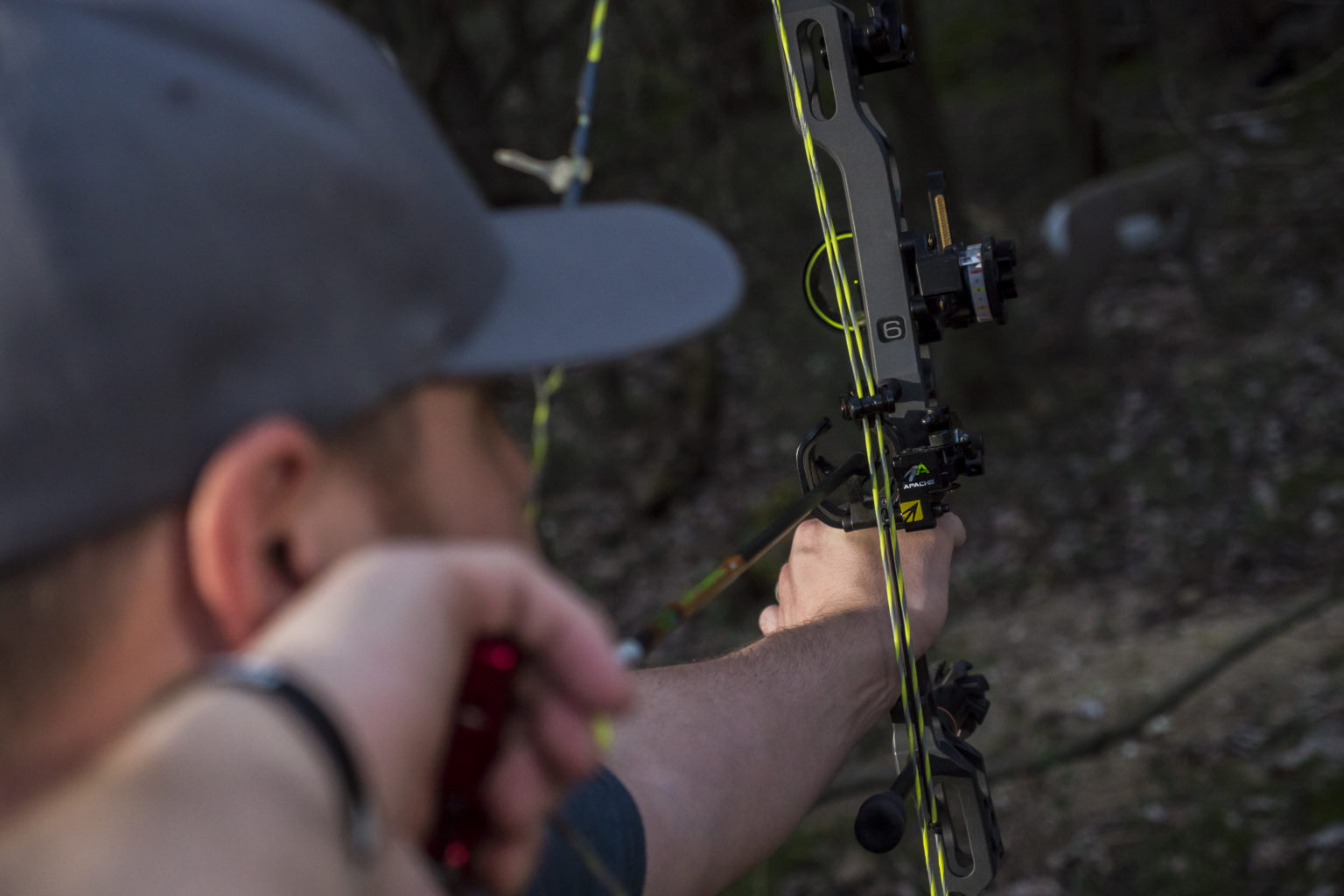
Arrow length – To standardize the ratings, the deflection of a static spine is measured with a 28” shaft; but obviously not everyone shoots arrows at that length. If an arrow shaft is cut to a shorter length, then the static spine is actually increased. Conversely, an arrow shaft longer than 28” will have a weaker deflection than what is published.
Think of taking two pieces of the same type of string and tying them to posts at different lengths. The string that spans a shorter distance will be able to hold more tension (have more resistance to outside forces) than the string that spans a further distance.
Bow design – Not all bows are created equal. You could take two bows that have identical draw weight and draw length settings, but don’t yield nearly the same energy upon release.
There are several factors to consider when talking about how bow design may affect dynamic spine, but what it really boils down to efficiency and aggressiveness.
Both bows may peak with a 70lb draw weight, but the “power stroke” of the two bows upon release may be drastically different. The main design features that should be considered are cam style, brace height, and to some extent let-off.
The more aggressive the cam, and the shorter the brace height, the more dynamic force will be transferred into the arrow shaft, so a stiffer spine will be needed.
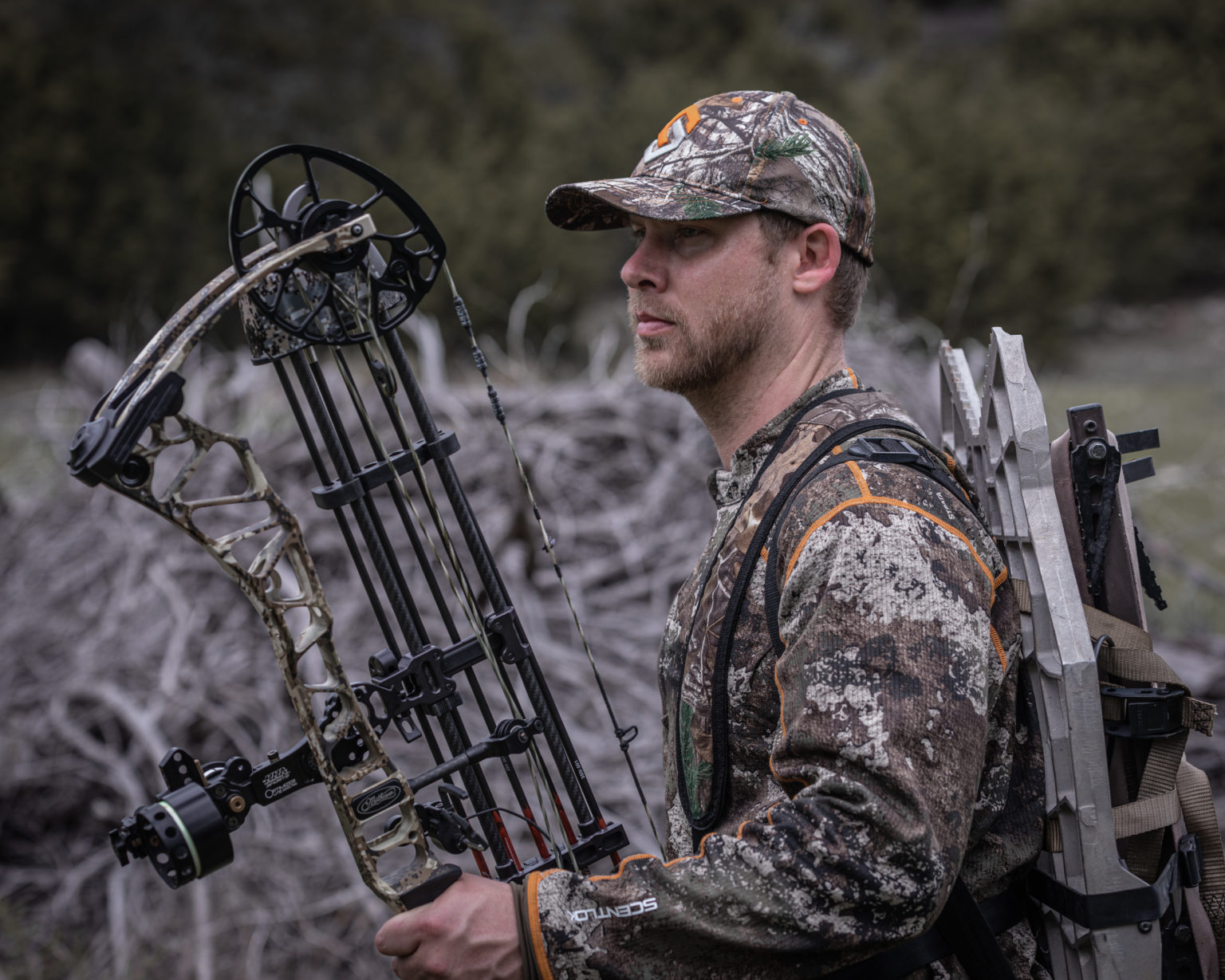
Point weight – It is common to recognize that changing the weight of a broadhead or field point will result in vertical point of impact changes down range, but what is often overlooked is that changes in point weight often have a very noticeable effect on the horizontal plane as well.
Increasing point weight decreases the arrow shaft’s dynamic spine, so often times a shaft with a stronger static spine is required as one increases the weight of their broadhead.
This phenomenon isn’t unique to broadheads and field points; rather it has to do with adding weight to either end of the arrow shaft, so to a lesser degree other weight changes, such as heavy lighted nocks or arrow wraps on the end of a shaft, will also affect dynamic spine.
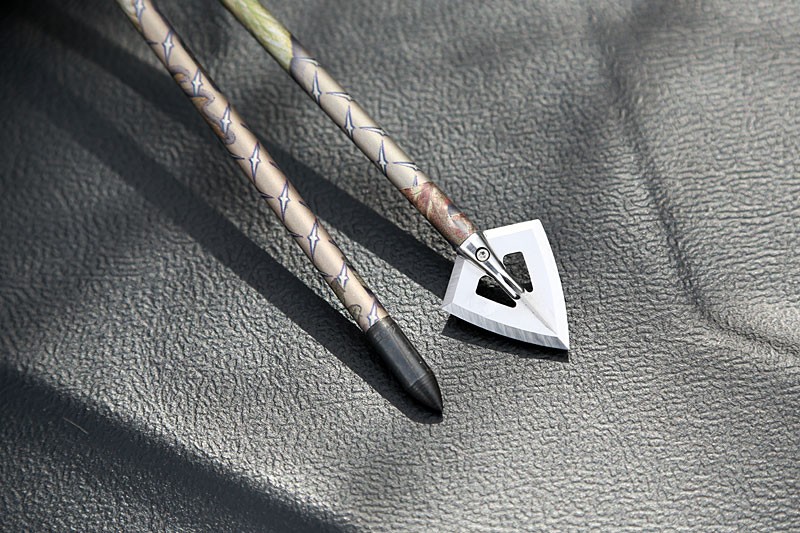
Selecting a Properly Spined Arrow
Broadhead-tipped arrows are more sensitive to proper spine than arrows with field tips, so for the bowhunter, getting a properly spined hunting arrow is a must. As you can clearly see, there are several things to consider when looking at arrow spine and selection charts from the various arrow shaft manufacturers.
If the charts have you in between two arrow spines, it is often recommended to go with the stiffer option. But remember that you can increase or decrease dynamic spine by changing your arrow length, adjusting your bow’s draw weight, or adding/removing weight from the ends of your arrow.

 By
By 